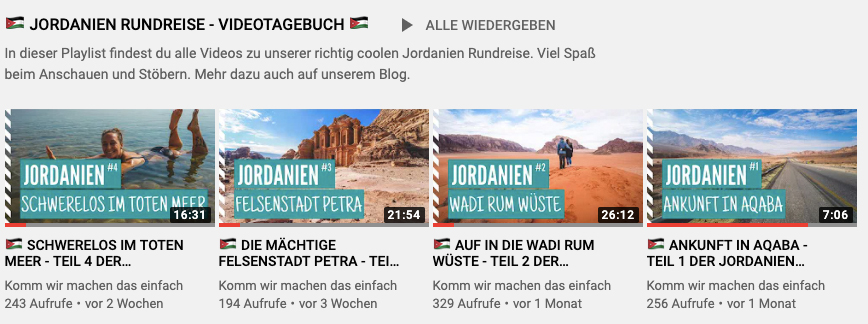Our Jordan tour (January 2020) took us across the country and provided us with many wonderful moments and stories. We have a penchant for the Middle East and the Orient anyway, and we’ve wanted to travel to Jordan for quite some time. When we stood at the Dead Sea in Israel and saw the Jordanian mountain range, we said, “Wow, Jordan! We absolutely have to go there sometime.”
It’s great that it finally worked out and we were able to explore this fascinating country. Jordan awaits you with a stunning underwater world in the Red Sea, massive rock formations in the desert, the rock city of Petra, street art in the capital, fantastic nature reserves, a vibrant culture, and incredibly delicious food. So, what are you waiting for? Off to Jordan!
You should also know:
- Currency for Jordan
- Off to the Dead Sea
- Entry & Jordan Visa
- Best time to travel to Jordan
- Safety in Jordan
- Our best Amman highlights
- Off to the Wadi Rum desert
- Top Jordan attractions
- Everything about the rock city of Petra
- Round trip through the country
- You should also know:
- Getting to Jordan
- Entry and visa
- The Jordan Pass
- Best time to travel to Jordan
- Health and vaccinations
- Holidays and cultural highlights
- Booking a rental car
- Traffic and roads
- Duration of the Jordan round trip
- Jordan round trip – Our route
- Highlights & Sights in Jordan
- Other Sights
- Our Accommodations
- Food and Drink
- Electricity and Internet
- Safety in Jordan
- Drinking Water and Garbage
- Currency and Budget
- Total Costs
- Conclusion of the Jordan Tour & Videos
Getting to Jordan
Jordan is located in the Middle East between Israel, Iraq, Syria, and Saudi Arabia. From Germany, it takes around 4.5 to 5 hours to reach Amman in the north or Aqaba in the south. You can currently fly to Aqaba from Berlin and Cologne with EasyJet. From Memmingen, there are also direct flights with Ryanair to the capital, Amman. Alternatively, there are quite expensive flights to Amman from Berlin and Munich with Royal Jordanian or from Frankfurt with Lufthansa. We paid €195 (€97.50 per person) for our round-trip flight (+ 1 x 15kg luggage) from Berlin-Schönefeld to Aqaba. The reason for the low price: We traveled during the absolute off-season (January).
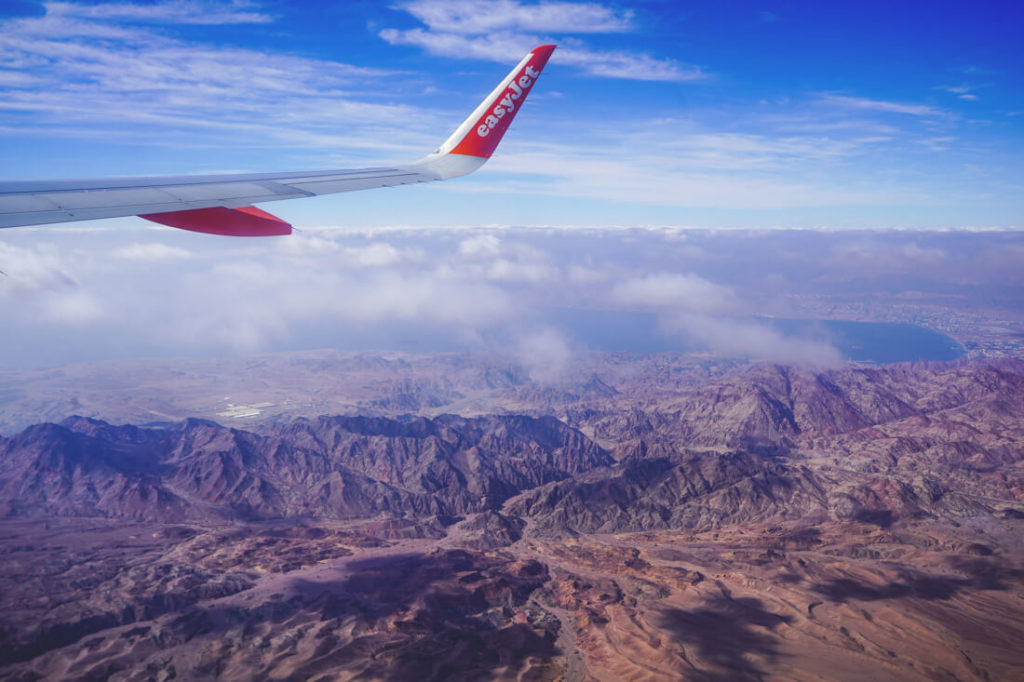
Entry and Visa
You will need a visa for your trip to Jordan. The good thing is, you can get one directly at the airport before you arrive. If your passport is valid for another 6 months upon entry and has at least two blank pages, nothing should stand in the way of a visa on arrival. If you enter the country via Amman, you will have to pay a 40 JD entry fee (approximately €51) on site. In Aqaba, however, we didn’t have to pay anything, although even the Foreign Office mentions a fee.
If you want to enter Israel by land, you have several options. You can obtain a visa directly at the border crossings (for a fee). Important: You must always pay an exit fee to Israel (and vice versa to Jordan) when you leave the country (between €10 and €40). You can enter Jordan by land via the following border crossings:
- Jordan River | Sheikh Hussein Bridge
- Allenby Bridge | King Hussein Bridge
- From Eilat (Israel) to Aqaba | Wadi Araba Crossing
Please note that the border crossings have specific opening hours. Furthermore, you cannot obtain a visa on arrival at the King Hussein Bridge border crossing. In this case, you must obtain your visa in advance. Another new development is that travelers staying at least three nights only have to pay 10 JD for the visa instead of 40 JD. The Jordan Pass might also be of interest to you. You’ll find out more about it in the next paragraph. You can also find a great and detailed article on this topic here: Flashpacker Travel Guide.
The Jordan Pass
The Jordan Pass is for visitors who stay at least three nights in the country. With this pass, you get free entry to over 40 attractions, including the Rock City of Petra or the Wadi Rum Desert. You also save the 40 JD visa fee if you enter via Amman and present this pass. The Jordan Pass is available in 3 versions:
- WANDERER PASS for 70 JD (89€) including 1 day in Petra, free entry to over 40 attractions and a visa fee of 40 JD if you stay in the country for at least 3 nights | Book here.
- EXPLORER PASS for 75 JD (96€) including 2 days in Petra, free entry to over 40 attractions and a visa fee of 40 JD if you stay in the country for at least 3 nights | Book here.
- EXPERT PASS for 80 JD (102€) including 3 days in Petra, free entry to over 40 attractions and a visa fee of 40 JD if you stay in the country for at least 3 nights | Book here.
You can purchase the pass online (for the Jordan Pass) and save it to your smartphone or print it out. The QR code is usually scanned or stamped on-site at the entrances to attractions. Your pass is activated with your first attraction and is then valid for 2 weeks. Please note: The pass is non-transferable, and you should always carry your passport with you in case you need to prove your identity. In total, you can save around €140 with the pass if you use it to its full extent.
Best time to travel to Jordan
To be honest, we hadn’t even considered the best time to travel to Jordan before booking our flights. Only later did we realize that January is probably not the best month for a Jordan tour. But in the end, we were very lucky and always had great weather when we needed it. However, it was quite chilly on many days (especially in the evenings) and at times quite cold. Fortunately, it was mostly quite pleasant during the day.
Travel guides and online sources particularly recommend the months from the end of March, April, May, as well as September, October, and November. Midsummer (June, July, and August) is considered the low season, with temperatures reaching up to 45°C in the south. You should only travel to Jordan in the summer if you can handle such temperatures. Also, keep in mind that it is usually 10°C colder in and around Amman than in other regions.

Very good: Spring and autumn
Spring, from March to May, is particularly noteworthy, when there is little rain, flowers are slowly blooming, and temperatures are very pleasant (up to 25°C). However, even in April, cold snaps with snow can occur, or flooding from heavy rain in November can occur. The weather in Jordan is truly changeable and often differs greatly from region to region.
In winter, some highlights are still closed, such as various hiking trails in the Dana Biosphere Reserve or Wadi Mujib (October to April). In addition to spring and early summer, previous travelers also recommend early autumn in September and October. However, all of these months are also peak season in the country, with higher prices.
Temperatures in January during our trip:
- Aqaba: 20° C – 22° C (sunny and warm)
- Wadi Rum: 15° C – 18° C (sunny but cold)
- Petra: 17 – 18° C (sunny and pleasant)
- Dead Sea: 20° C – 22° C (sunny and warm)
- Dana Biosphere Reserve: 14°C (very cloudy and cold)
- Amman: 15° C – 17° C (nice spring weather)
Towards the end, we also had two days with strong winds, rain, fog, and freezing temperatures around Wadi Musa (Petra). It was also really cold in the Dana Biosphere Reserve, with wind and drizzle. Winter in Jordan lasts around 30-40 days (especially January) and can bring all sorts of weather. On the way to Wadi Musa (very high in altitude), we even drove past snow, but we were able to lie on the beach at the Dead Sea and in Aqaba and enjoy the sun.
Health and Vaccinations
Jordan is a fairly clean country in this respect (except for the garbage everywhere) with good hygiene standards. You can eat pretty much anything without worrying, but you should of course still wash or boil any vegetables and fruit you buy beforehand. We probably wouldn’t buy ice cream in the most remote corner where the cold chain might have been broken. The same goes for meat or fish. Tap water is usually taboo unless there’s a sign indicating that you can drink it. Bottled water is better here. Whenever possible, we always buy a 5-liter canister and then fill this water into our drinking bottle (e.g., our own bamboo bottle from the Weltverliebt Shop*).
No vaccinations are required for entry into Jordan. Only if you are coming from a yellow fever area or have been in transit through a yellow fever area for more than 12 hours do you need to provide proof of yellow fever vaccination. The same applies if you are coming from a polio area. Make sure your standard vaccinations are up to date; then you’ll be on the safe side. It’s very important that you have international health insurance for the duration of your trip to Jordan. More on this here: Travel Insurance.
Holidays and Cultural Highlights
When planning your trip, you shouldn’t ignore the cultural peculiarities. This year, for example, Ramadan begins on April 23rd and ends on May 23rd, 2020. During this month of fasting, Muslims completely abstain from food, drinks, and even cigarettes from sunrise to sunset. As soon as evening falls, they meet with family and friends for a meal.
At this time, many restaurants, banks, offices, and shops don’t open until around 9 a.m. and close again at 2 p.m. You are also prohibited from eating, smoking, or drinking in public. This is a matter of respect. Ramadan and its observance are taken very seriously in Jordan. You should also be aware that Friday is the weekly holiday. Many shops, banks, etc. are also closed on Saturdays.
- May 1, 2020 | Labor Day
- May 25, 2020 | National Day (Independence Day)
- June 10, 2020 | Army Day
- July 30, 2020 | 4-day Eid al-Adha (the most important Islamic festival)
- August 21, 2020 | Islamic New Year
- December 25, 2020 | Christmas
Book a rental car
For our tour through Jordan, we once again had a rental car because we wanted to explore the country as flexibly as possible. We made our reservations in advance at billiger-mietwagen.de* and booked a small car including all necessary services. In the end, we paid around €197 for the week (€28 per day) for our Budget car. We noticed that there are often hardly any truly compact cars available locally, so it’s easy to get a larger car. We weren’t pressured into paying for insurance, etc., on-site; everything was handled very professionally.

The €350 deposit was blocked on our credit card; we always carry the DKB card* and the N26*. The roads in the country are generally very well maintained, and we rarely encountered a pothole. We paid just under €1 per liter of gasoline (as of January 2020). A gas station employee will always help you fill up, and you’ll also pay them. It’s best to tip them 0.5 JD for their help.
For navigation, as always, we downloaded the map of Jordan from Google Maps beforehand and then used it offline on our smartphones. This has worked really well in all countries so far. And by the way: You don’t need a 4×4 or SUV in Jordan unless you want to drive into the desert on your own (only with a 4×4).
Traffic and Roads
Another important topic is, of course, the traffic and the condition of the roads in Jordan. Basically, driving in the country isn’t all that different from other countries. Traffic drives on the right, so you don’t have to change your orientation much. Traffic outside of cities is really very relaxed, although some Jordanians like to put their foot on the gas pedal. The highways are well-developed, and you can make good progress. On country roads, you’re usually allowed to drive between 60 and 80 km/h, sometimes even 100 km/h (on the Desert and Dead Sea Highways, up to 110 km/h). Within towns, the speed limit is 50 km/h.
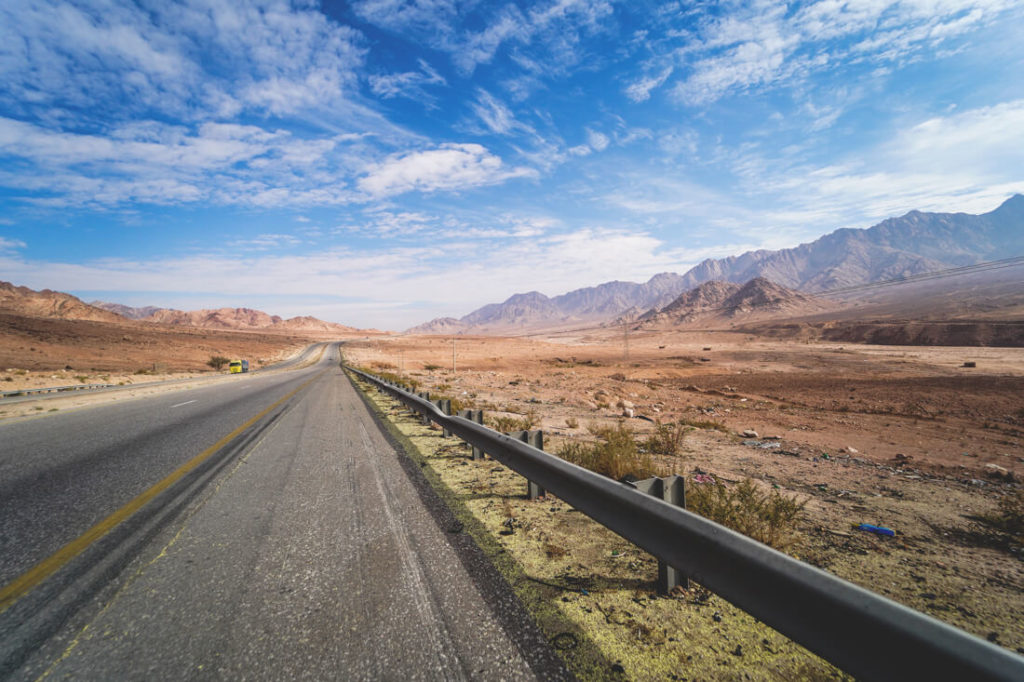
We often saw police officers at the side of the road conducting checks. We were also pulled over several times and had to show our driver’s licenses. The police were always very friendly and let us continue after a few seconds. Be careful: There are speed bumps on the roads, which are sometimes not immediately noticeable. In some areas, you also have to watch out for animals that like to wander close to or on the road (dogs, cats, donkeys, etc.).
Always drive carefully and with foresight; don’t let others throw you off guard. Driving in Jordan isn’t difficult at all. If possible, avoid driving at night and arrive at your destination during daylight hours. We highly recommend a Jordan tour with your own rental car! More information here: Driving and rental car in Jordan.
Duration of the Jordan tour
We visited Jordan for a week and can recommend this duration due to the country’s smaller size. Two weeks would have been too long for us personally in January. However, 10 to 14 days are a great option if you want to explore even more spots. 7 to 10 days are definitely enough for the most important highlights. We usually drove for 2 to 3 hours a day, and there were also days when we didn’t drive at all.
It was important for us to get a good first impression of the country. We had a fantastic time in Jordan during that one week. We even stayed an extra day because our flight was canceled. This gave us an extra night in a fantastic 5-star InterContinental Hotel on the Red Sea. So, in the end, being “stuck” in the country wasn’t so bad after all.
Jordan Tour – Our Route
We started in Aqaba on the Red Sea. From there, we continued to Wadi Rum, Petra, past Wadi Mujib to the Dead Sea, and up to Amman. From Amman, we then went back to Aqaba via the Dana Biosphere Reserve. You can find everything about the individual stops and highlights a little further down.
All days of our tour:
- 1 | Arrival in Aqaba
- 2 | Wadi Rum tour & overnight stay
- 3 | Continue to the rock city of Petra
- 4 | Petra and further to Wadi Mujib and the Dead Sea
- 5 | Dead Sea and continue to Amman
- 6 | Sightseeing in Amman
- 7 | Amman and Dana Biosphere Reserve
- 8 | Return to Aqaba & overnight stay
- 9 | Return flight to Germany
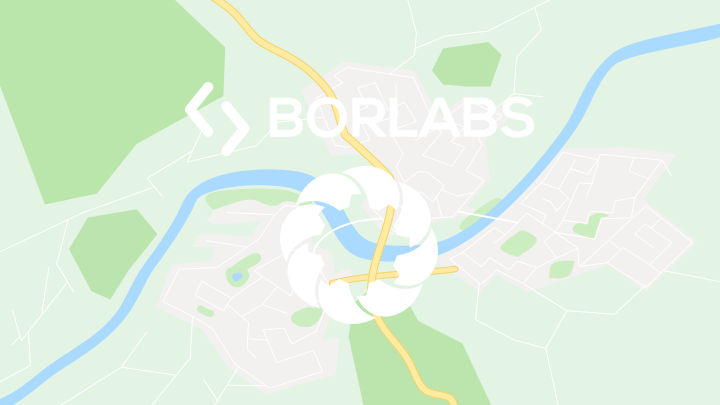
By loading the map, you accept Google’s privacy policy.
Learn more
Load map
Highlights & Sights in Jordan
The country has many great highlights and sights to offer. In the following section, we would like to introduce you to our stops on the Jordan tour and provide you with a list of other possible stops at the end.
1. Aqaba on the Red Sea
We started our tour in Aqaba on the Red Sea. The feeling was like being next door to Eilat in Israel. The port city is the only beach resort in the entire country and very popular with divers and snorkelers. There are also several sandy beaches here, some more beautiful than others. We thought the souqs were pretty cool with their many markets and stalls. The Central Mosque, the Sheikh Zayed Mosque, and the old palace are also very nice to look at.
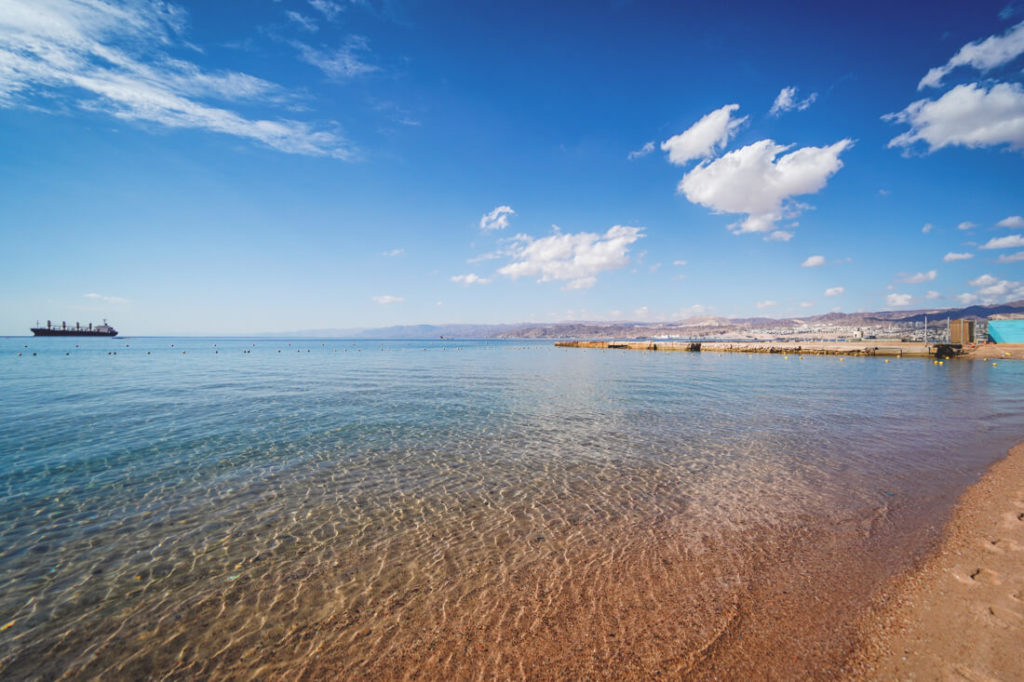
2. Wadi Rum Desert
After the first night of our Jordan tour in Aqaba, we made our way to Wadi Rum Village (entrance fee 5 JD/free with the Jordan Pass). Here, we prearranged a jeep tour with an overnight stay in a Bedouin camp (Candles Camp). The drive to the village took about 90 minutes, and from there, we continued through the fantastic desert landscape. Here, 1,000-meter-high rocky mountains rise vertically, stunning every visitor.
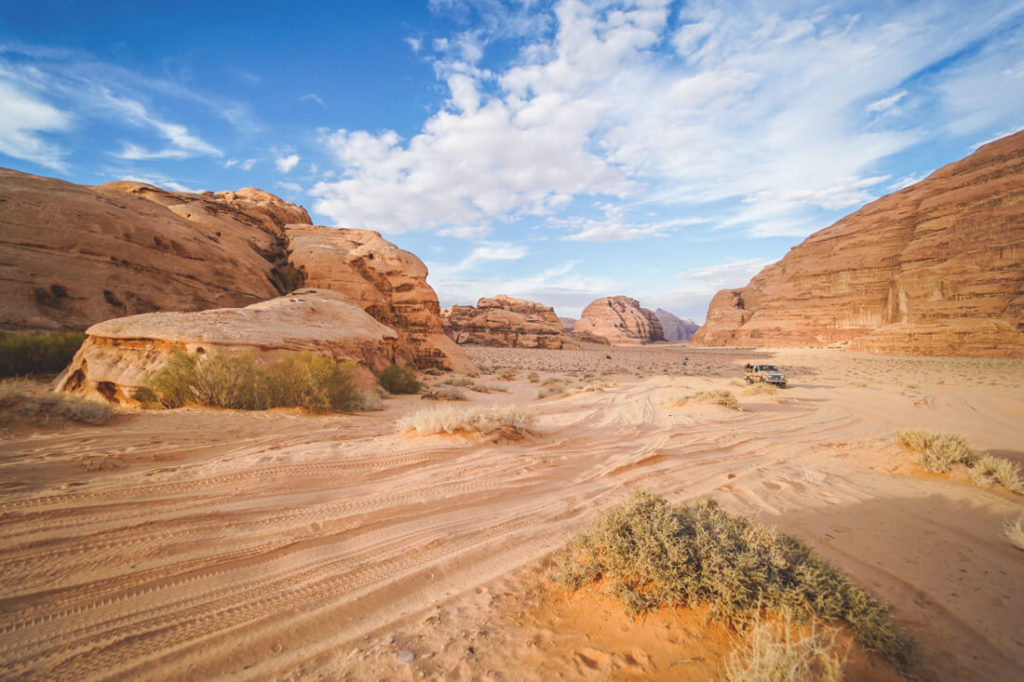
After our 5-hour tour through the desert, we went to Candles Camp. Here we spent the night in a small tent and were served a delicious meal in the evening. We highly recommend spending at least a full day in the desert. If you stay longer, you’ll also be able to see other highlights of this desert. Our detailed article on this topic can be found here: Wadi Rum Jordan.
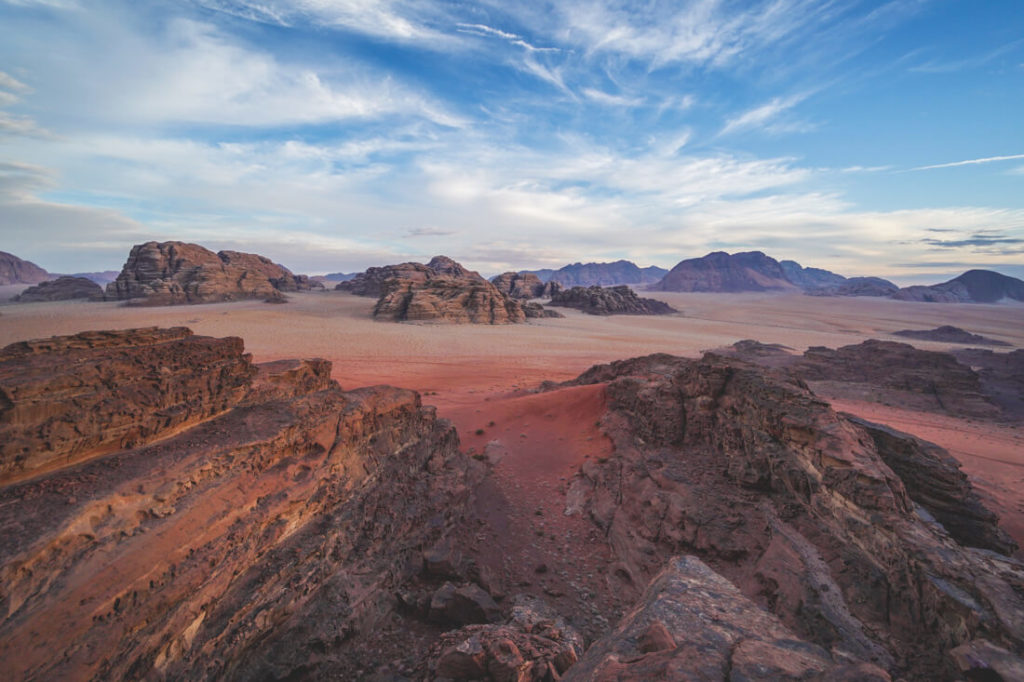
3. Petra, the Rock City
One of the most beautiful highlights of this tour was definitely our exploration of the rock city of Petra. Touristy or not, you have to see this ruin site. We can hardly put into words how blown away we were by this scenery. Take at least a full day to explore Petra. If you have more time, you can also take some cool hikes (e.g., the Al Kubtha Trail) to other highlights and viewpoints. You can find our detailed article on this here: Petra in Jordan.
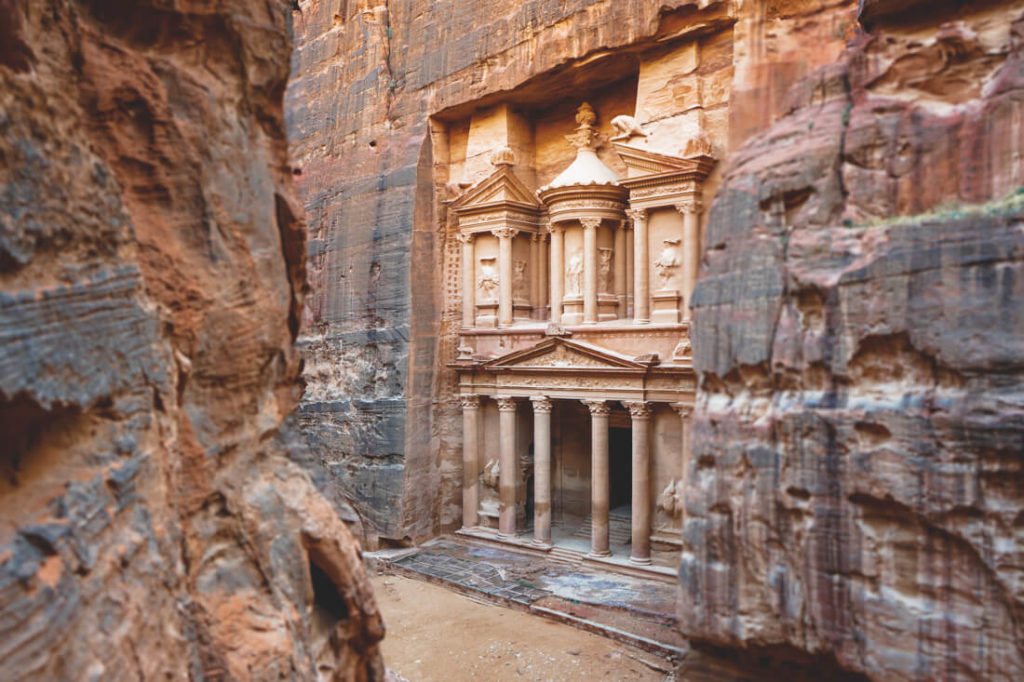
It’s best to start your tour at the Visitor Center and walk straight ahead to the beautiful Siq. At the end, the breathtaking Treasury awaits you. From there, the tour continues past the royal tombs, the beautiful facades, the large temple, and the theater. There’s so much to discover, even though only 20% of the ruined city has been excavated. We could hardly believe what the Nabataeans were capable of back then and what they created here with their own hands.
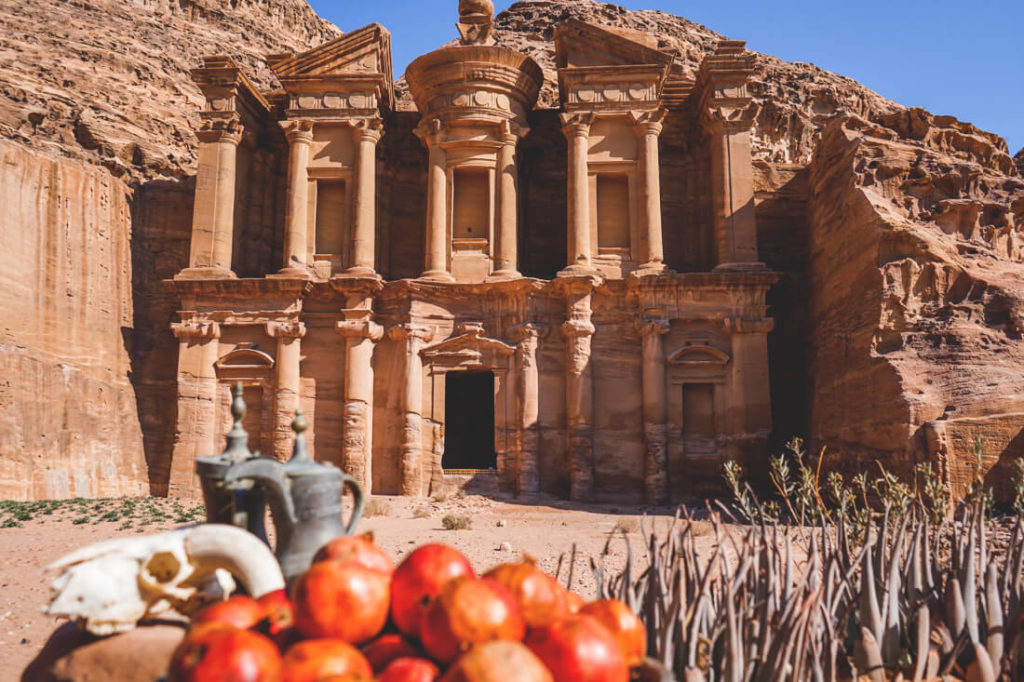
4. Dana Biosphere Reserve
On our return journey from Amman, we stopped at the Dana Biosphere Reserve. This is located about 2.5 hours from Amman and Aqaba. The reserve awaits you with fascinating landscapes, a small village above the mighty gorge (Wadi Dana), and rocky plateaus with beautiful viewpoints. While we were there, only the path into the gorge (Wadi Dana Trail) was open and accessible without a guide. The other great hiking trails are generally only open between April and October and can sometimes only be accessed with a guide.
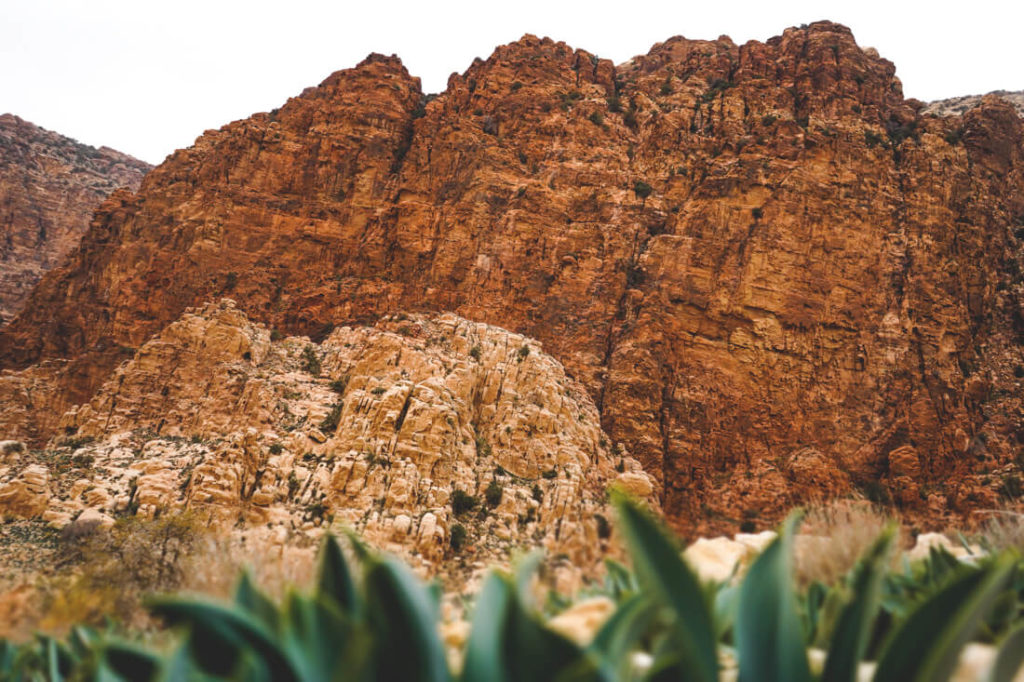
The entrance fee is 8 JD and is not included in the Jordan Pass. There are more than 600 species of wild plants and 250 species of birds, mammals, and reptiles throughout the reserve. Even wild cats, wolves, eagles, and hyenas are said to be native here. You can also stay overnight in the area, for example, at the Dana Guest House, the Rummana Camp*, or the Feynan Ecolodge. At the reception of the Dana Guest House, you can get up-to-date maps and further information about the hiking trails.
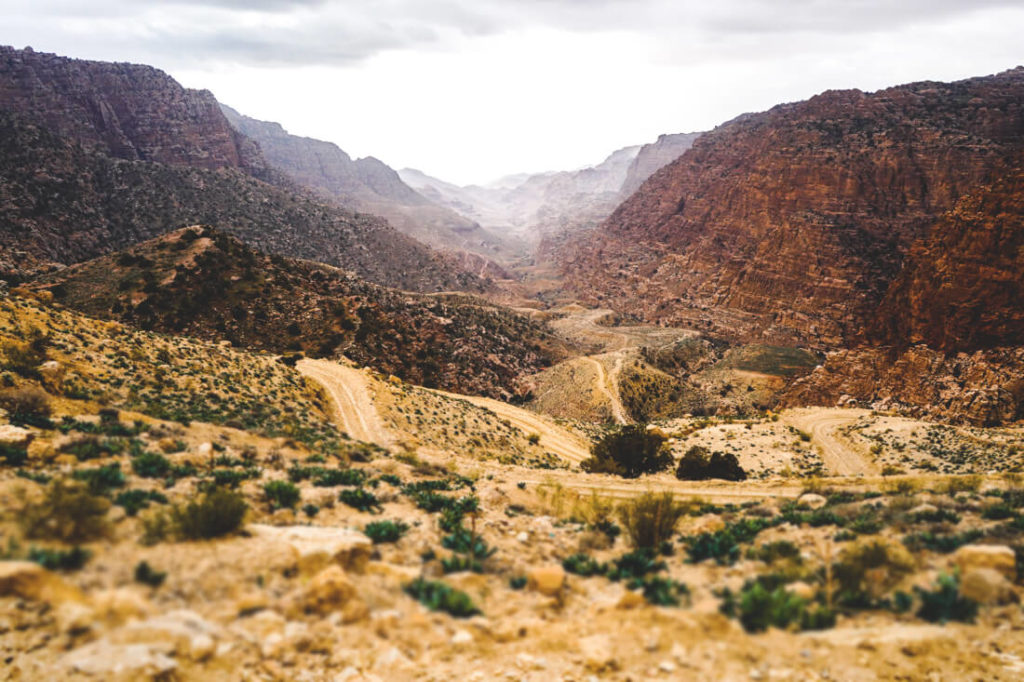
5. Wadi Mujib – Grand Canyon
We only stopped here briefly, as we already knew that Wadi Mujib was unfortunately closed (entrance fee: 21 JD). Unfortunately, nothing is happening here between October and April, which we were very sad about. Wadi Mujib is, so to speak, the Grand Canyon of Jordan and awaits you with a massive gorge. We had read beforehand that you can go on really adventurous tours here with a guide, such as canyoning. We are heartbroken that we unfortunately couldn’t do that; it would have been exactly our thing.
By the way, this canyon is the lowest national park in the world, at an altitude of 410 meters below sea level. Crazy, right? Water flows through the gorge from seven tributaries, which is why you can experience such cool water adventures here. There are also supposed to be hot springs with healing properties in Wadi Mujib. Have you ever been there? Perhaps you can share your experiences with us in the comments. There’s a great report here: Spontaneous Around the World – Wadi Mujib.
6. Dead Sea
If you’re planning a trip through Jordan, you should definitely plan a day at the Dead Sea. It’s simply amazing how you glide almost weightlessly through the water there. Even in January, we had fantastic temperatures of around 22°C and a great stay at the Ramada Resort Dead Sea*. You can find our detailed article here: Dead Sea in Jordan – All the Highlights and Tips.
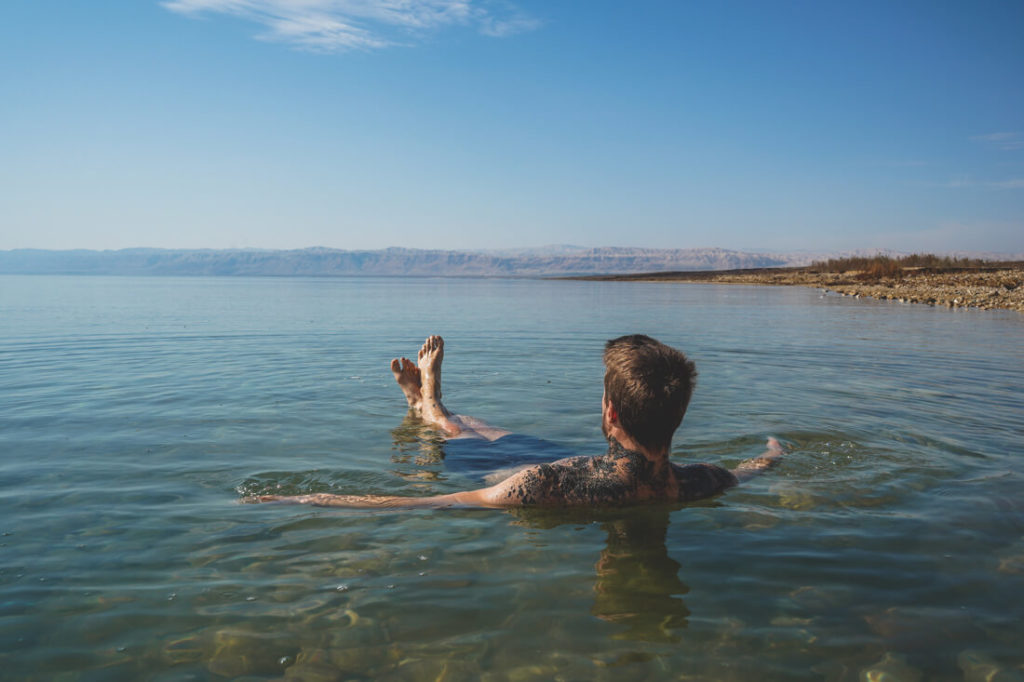
7. Capital Amman
Some people find Amman awful, others love it. We honestly thought it was really cool there and discovered many great spots. We stayed two nights at the Nomads Hotel*, which is super centrally located. We spent a whole day exploring the cool street art scene, the historical buildings (Citadel and Roman Theater), as well as the bustling souqs and cool cafes. Amman has a lot to offer and should be on your list for at least one day.
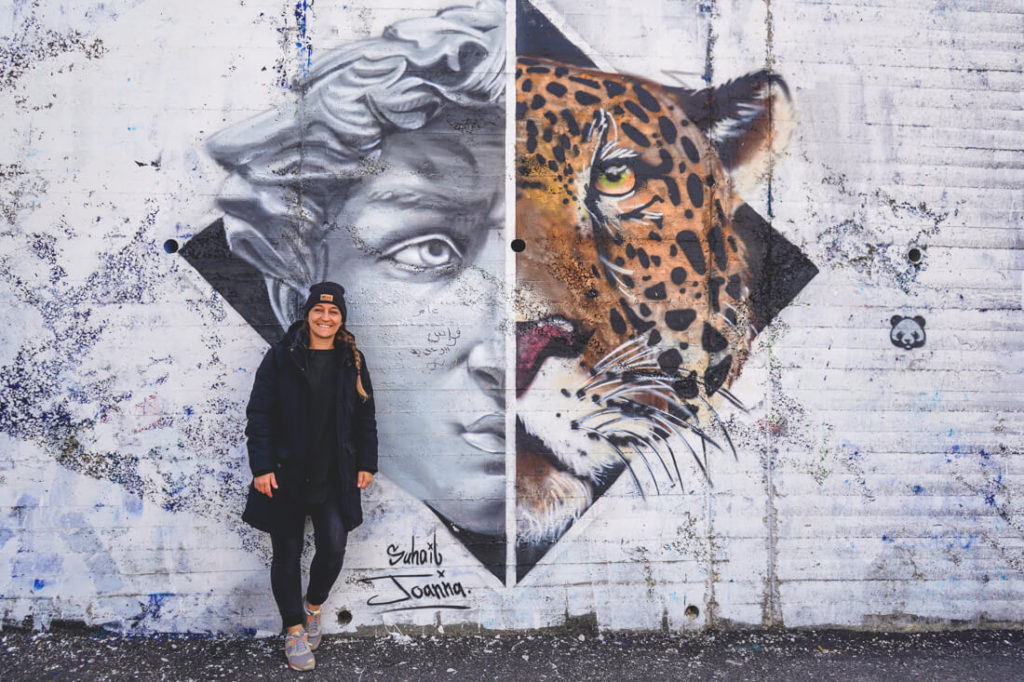
The view from the Citadel, overlooking the entire city, is particularly beautiful. Be sure to stroll along Rainbow Street and sample the delicacies at the markets around the Al-Husseini Mosque. There are so many cool cafés in Amman, it’s hard to choose. We found the café in the Wild Jordan Center and the Rumi Café particularly stylish. Tim’s Burger on Rainbow Street offers incredibly delicious burgers. A detailed article about Amman can be found here.
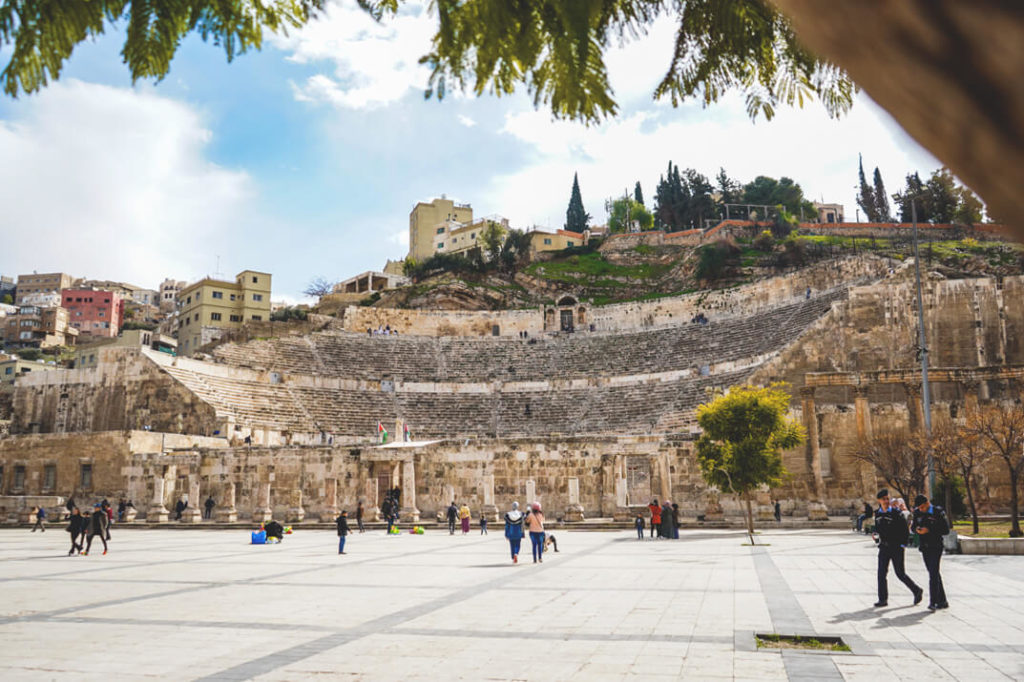
Other Sights
But that’s not all; there’s much more to see in the country. We’ve marked all the spots for you on Google Maps. A trip to Wadi Araba, a desert still free of tourism, is certainly interesting. The Ajloun, Azraq, and Yarmouk reserves also sound exciting. If you’re in the Amman area or the Dead Sea, a detour to the Ma’in Hot Springs might also be of interest to you. There are also many desert castles and other historical ruins throughout the country, such as those in Jerash, Madaba, and Kerak. Go with the flow and don’t plan too much in advance. This way, you’ll be and remain flexible during your Jordan tour.
Our Accommodations
We stayed in simple accommodations, smaller hotels, and chic resorts. This trip had everything. Often, we really only need a bed to sleep in, since we’re on the move all day anyway. However, after we were really cold the first few nights, as there was no heating and often only thin blankets, we started staying in slightly better accommodations. The nights in January were simply too cold to sleep comfortably in the simple homestays.
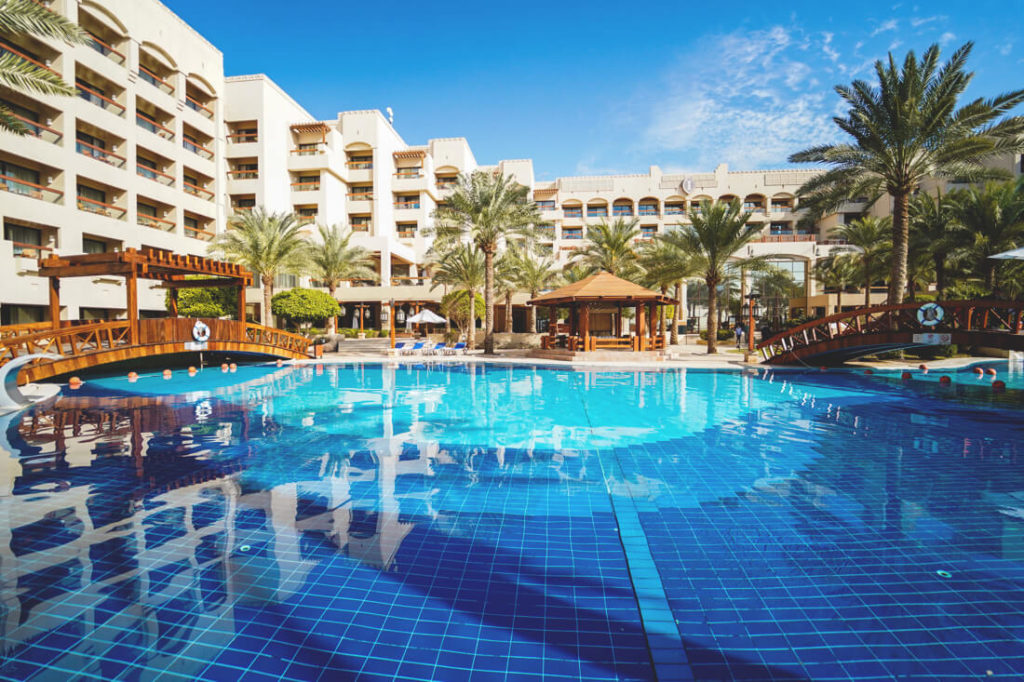
The Nomads Hotels in Amman and Petra are highly recommended. We also recommend the Ramada Resort on the Dead Sea and the chic 5-star InterContinental Resort on the Red Sea in Aqaba. Price-wise, you should expect to pay around €40 to €50 per night for simple accommodations (for a double room). You can also get the very simple homestays for €20 to €30 per night. If you want to check into a 4-star resort, you should budget around €70 to €100 per night.
- Aqaba: Family Home (Homestay)* | €19 per double room
- Wadi Rum: Candles Camp* | €127 for tent, tour & food
- Wadi Musa/Petra: Brother Home (Homestay)* | €25 per double room with breakfast
- Dead Sea: Ramada Resort* | €82 per double room with breakfast
- Amman: Nomads Hotel* | €48 per double room with breakfast
- Wadi Musa/Petra: Nomads Hotel* | €48 per double room with breakfast
- Aqaba: InterContinental Aqaba* | 0€ (flight was cancelled)
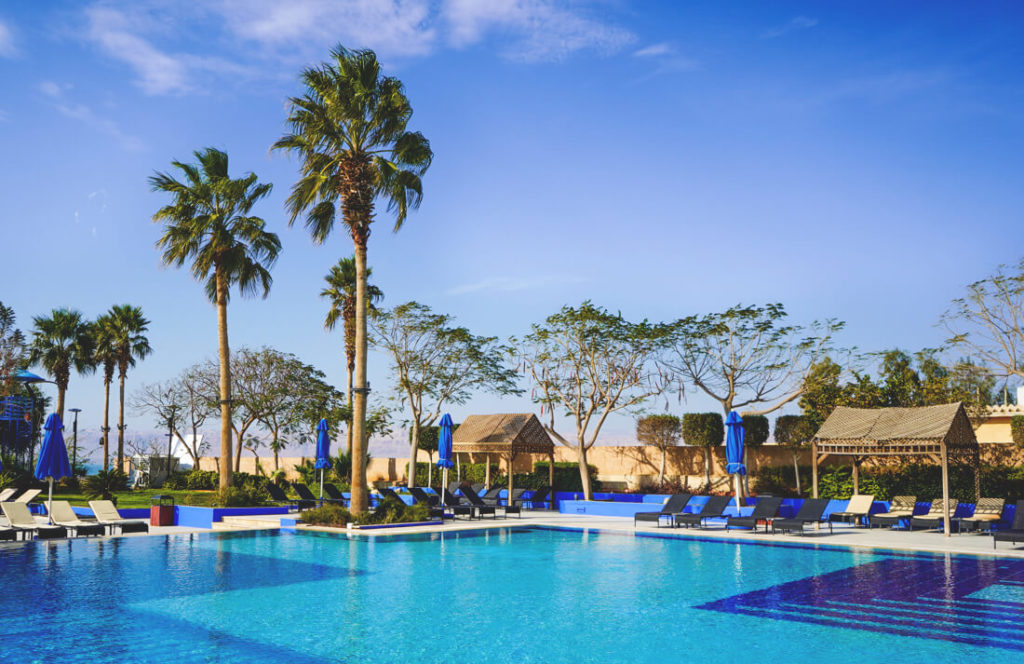
Food and Drink
IfIf you like oriental cuisine, you’ll love Jordan. Flatbreads, hummus, falafel, sweet baklava, various spices, and plenty of fruit and vegetables are available on every corner. People also drink vast amounts of black tea in this country, often with extremely high levels of sugar. The main meal usually consists of many sauces, chicken, lamb, olives, cheese, rice, various salads, vegetables, oil, spices, and so on.
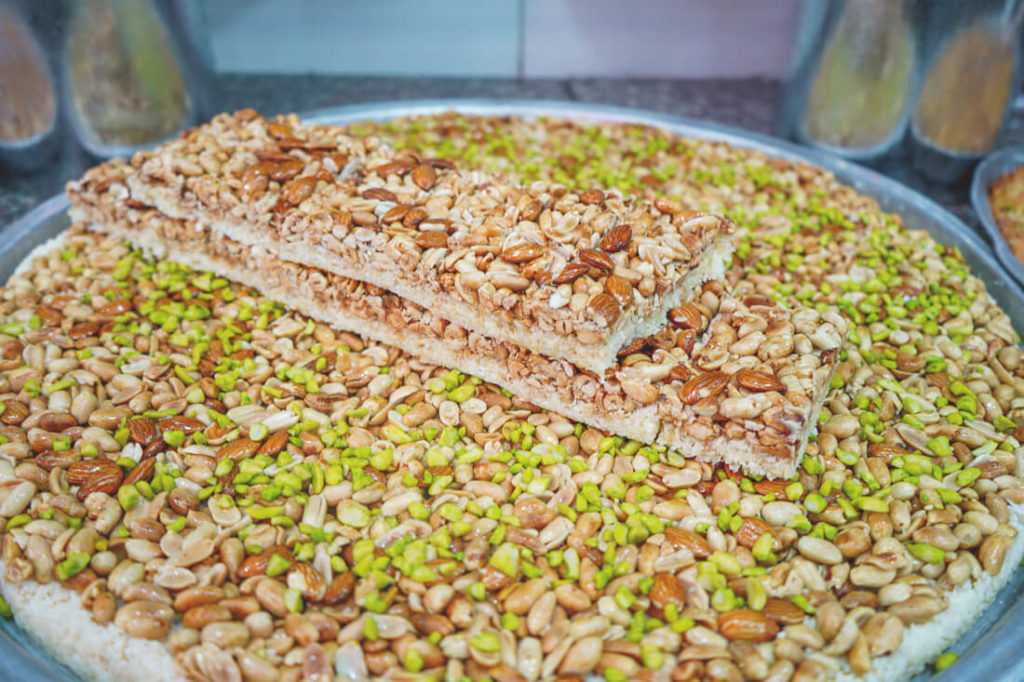
Especially in the markets in the souqs, you’ll find the full range. Don’t be afraid to just wander into a small, inconspicuous snack shop. We found the best hummus with falafel for just €1. You’ll also find Western cuisine in the country (pizza, burgers, pasta, etc.). We found the bakeries particularly cool, where you can fill your bag with incredibly delicious pastries (sesame sticks, sesame cookies, baklava, etc.).
The top dishes in Jordan:
- Mansaf | National dish (lamb, yogurt sauce, nuts)
- Mousakhan (chicken, spices, flatbread)
- Maglouba (steamed meat, fish, vegetables)
- Farouj (chicken, bread, salad)
- Shish kebab (lamb, tomatoes, onions on a skewer)
- Shauwarma (lamb, salad, pepper, bread)
- Baba Ghanush (eggplant puree)
- Falafel (chickpea meatballs)
- Hummus (chickpea puree with garlic)
Electricity and Internet
You should also bring the appropriate power adapter for your trip. On the one hand, you’ll find Type C/F sockets, which we also use in Germany, and Type G sockets with 3 pins, as well as Type G. So, if you have an adapter for these types of sockets with you, you’ll probably be able to charge your devices anywhere. We recommend this all-rounder adapter* for more than 224 countries. However, some accommodations also had adapters.
Most accommodations, cafes in Amman, restaurants, and some tourist spots offer Wi-Fi. If you want internet on the go, we recommend the Umniah SIM card. We bought the 14 GB card for 11 JD (14 €) right at the airport in Aqaba. The employee set everything up for us, and after 2 minutes, we had internet on our smartphones. There are various packages (1 GB, 2 GB, 5 GB, 10 GB, etc.) to choose from. Prices are, of course, a bit more expensive at the airport. Other providers: Zain and Orange.
Safety in Jordan
First of all: We never felt uncomfortable or unsafe in the country. We were warmly welcomed everywhere and always treated fairly. The locals are truly hospitable, helpful, and cosmopolitan. Jordan suffers from the bad reputation of neighboring countries, such as Syria, Iraq, and Israel. Jordan is, however, a very safe travel destination, and the locals are always concerned about the well-being of their guests. You will quickly notice that the police (Tourist Police) are always present at tourist attractions. Incidents can, of course, occur anywhere, so you should avoid the border areas with Iraq and Syria, as well as crowds (especially in mosques), demonstrations, arguments, and fights.
Important for you: Lèse majesté (damage to photos) and same-sex relationships are prohibited. Jordanians also don’t take alcohol and drug-related driving lightly. Even the smallest amount of drugs can land you in jail. You should also be aware that the majority of the population was brutally expelled from Palestine, so you should refrain from making pro-Israel statements.
But back to safety: Follow the basic rules, use common sense, and you’ll feel safe in this country. Don’t be surprised by security checks (luggage scans) in hotels or the many police checkpoints on the streets. This is part of the experience and serves a safety purpose. More on this here: Safety in Jordan.
Drinking Water and Garbage
Unfortunately, Jordan isn’t exactly a model country when it comes to garbage. Garbage is omnipresent and will accompany you throughout your trip. Whether it’s locals or tourists, garbage is often simply left in the wild. We ask you to always throw your trash in a bucket and, if necessary, ask others to do the same.
The tap water is not drinkable everywhere. We couldn’t even drink the tap water in the Ramada Hotel. It’s best to get 5-liter water canisters from the supermarket. Jordan is also a country that suffers from water shortages. So, for you, it’s important to use water sparingly.
Currency and Budget
In Jordan, you pay with the Jordanian Dinar (JD for short). One JD (“Jee-Di”) currently gives you €1.27. There are various banknotes in denominations of 1 JD, 5 JD, 10 JD, 20 JD, and 50 JD. In addition, there are coins in denominations of 500, 250, 100, 50, 25, 10, and 5 Fil. Jordan’s currency is very strong, so you’ll quickly notice that it’s not exactly a cheap country to travel to. More about this here: Currency in Jordan – Everything about paying and withdrawing money.
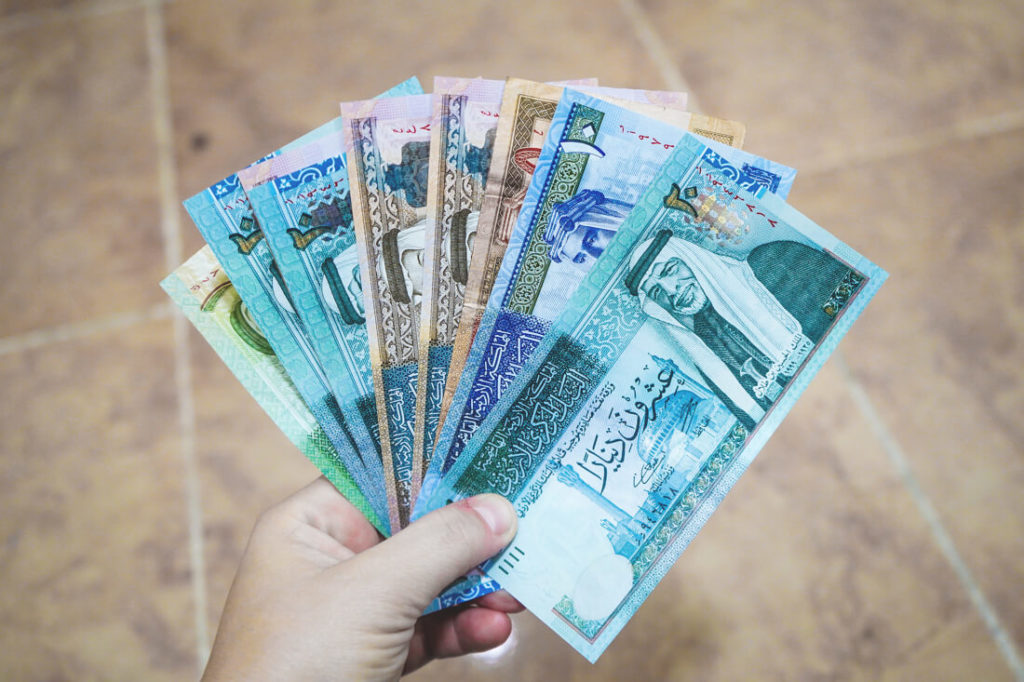
We always withdrew money locally from ATMs using our credit card. Fees of around €5 per withdrawal usually apply. It is not a problem to pay with a credit card in the country. You should only always have cash in your pocket for gas stations, small shops, and remote locations. A detailed report on our costs and financing will be available on the blog soon.
Some prices in Jordan:
- Simple room: from 15 JD
- Good hotel: from 40 JD
- Good resort: from 60 JD
- Rental car per day: from 20 JD
- Hummus & Falafel: from 1 JD
- Meal in a restaurant: 6 – 10 JD
- Gas per liter: 0.78 JD
- 1 bottle of water: 0.25 JD
- Soft drink: 0.5 – 1 JD
- Pack of waffles: 0.75 JD
- Small bag of pastries from the bakery: 1.50 JD
Total costs
As always, we recorded our expenses and can therefore tell you relatively accurately what we spent on our Jordan tour. The costs are, of course, individual and depend on many factors: travel time, requirements, budget, etc. But perhaps you can get a better idea of the price level based on our expenses. In summary, we can say that we spent approximately €615 per person for the entire trip, including everything included.
Conclusion of the Jordan Tour & Videos
We had a wonderful time in Jordan and highly recommend a tour through this fantastic country. Even if, like us, you only have a week, it’s absolutely worth it. Check out the Wadi Rum desert and, by all means, the rock city of Petra. Amman is also a really cool and vibrant city that is often underestimated.
In Aqaba, you can explore the magnificent underwater world of the Red Sea, feel weightless in the Dead Sea, and explore the many wonderful nature reserves. The people in Jordan are incredibly helpful and friendly; we were always treated well. Let yourself be enchanted by Jordan and experience this beautiful country in the Middle East on your own.
